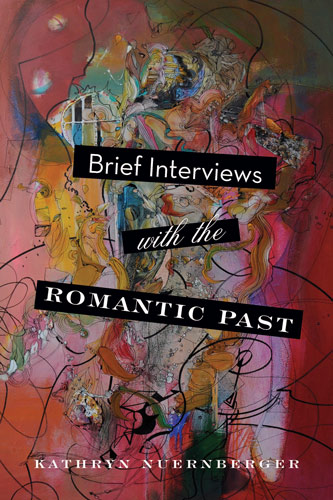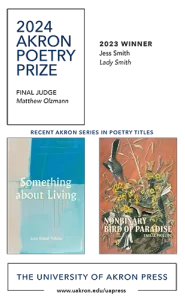Brief Interviews with the Romantic Past
Years ago, a hot air balloon landed directly outside my house. I don’t remember the circumstances, but the resulting fascination with them has never left me, so I was delighted to read Kathryn Nuernberger’s opening essays in Brief Interviews with the Romantic Past about ballooning’s forgotten women.
Years ago, a hot air balloon landed directly outside my house. I don’t remember the circumstances, but the resulting fascination with them has never left me, so I was delighted to read Kathryn Nuernberger’s opening essays in Brief Interviews with the Romantic Past about ballooning’s forgotten women.
Notable is Sophie Blanchard, who lived from 1778 to 1819, and is the subject of “And Now Brightness Falls from the Air.” She wears a “white dress and hat of ostrich plumes [ . . . ] as she stands free-ballooning in her basket the size of a child’s cradle,” writes Nuernberger, painting the picture. Unfortunately, Blanchard met a rather spectacular end.
Preceded by two prizewinning books of poetry, this is Nuernberger’s third book and winner of The Journal Non/Fiction Prize. Her essays are anything but ordinary. The most magnetic ones are in the first half of Brief Interviews with the Romantic Past when she picks famous or unsung characters from earlier centuries and borders them with autobiographical situations.
For example, “The Inner Life of Charles-Henri Sanson” begins this way: “I want to believe people are different from how they seem. Certainly I am, and presumably you are too.” Sanson wanted to be a doctor, but instead was forced to take on the family occupation as Royal Executioner of France. We get some grizzly details about torturous executions of the day, but Sanson also found time for hobbies like growing herbs, playing the violin, and less savory endeavors involving corpses.
Nuernberger concludes: “Many of us discover one day we are not the person we intended to be. [ . . . ] We have made compromises. We are more fearful and weak than the selves of our youth would have thought possible.” She imagined Sanson was a different person inside. “But actually he devoted every year he had to becoming exactly the person he was. And I—like you—am doing the same.”
One subject streaming through her book involves women, including the author, giving birth. She experienced the extreme sadness of miscarriages, but then had the happier occasion of giving birth to a daughter, now four years old.
One essay on birthing, the bizarre “Heed Not the Milk Hare,” involves a woman named Mary Toft who miscarried in 1726 in England after apparently being startled by a rabbit. “About fourteen days hence she was delivered of ‘a perfect rabbet,’” quotes Nuernberger. “A few days after came four more, until there were nine, all of whom died . . . .” In actuality, Toft had begun inserting “various animal parts into her body to be born anew.” When the hoax was discovered, she was imprisoned for a year, “and when she emerged in 1727, she had given birth to a human daughter.”
Two episodes in the book vary from standard essay form. “Pantoum for Tilly Matthews” disregards the normal four-line pantoum pattern in which second and fourth lines become first and third lines in the next stanza. In this case, Nuernberger sculpts them into prose.
The other one, “If I Make My Bed in Hell, You Cannot Help It, and I will Have to Lay on It,” consists of aphorisms, some by 20th century plywood sign artist Jesse Howard and others by Nuernberger. Examples of Howard’s: “God bless the Owl that picked the Fowl and left the Bones for Old Man Howard,” and “These People sneak up here when They think I am asleep.” Nuernberger’s include, “Lying, I read, is the consequence of not understanding the possibilities of what could happen between two people or a community of people.”
A glimpse into the author’s personal life appears in “The Sameness of Days.” Her husband Brian brings home a diary he bought at auction that contains entries from 1949 to 1951. Most begin with the words “At home” followed by predominantly mundane activities and comments on the weather. In contrast, Nuernberger writes:
I do not keep a diary, only a day planner, because I prefer the possibility of the perfect day that the to-do list lays out to the diary’s record of what was done and what was left unfinished. “Clean out the barn,” for example, has been on a hundred different to-do lists at least, but hasn’t been done since we moved here . . . .
Many more historical persons than mentioned above are profiled, resulting in conjoined portions of history and memoir, and a bonus section includes sources Nuernberger researched while composing her essays. Brief Interviews with the Romantic Past is full of lively and imaginative characters, foremost of whom is the author. With three prizes behind her, I look forward to her next writing adventure.





